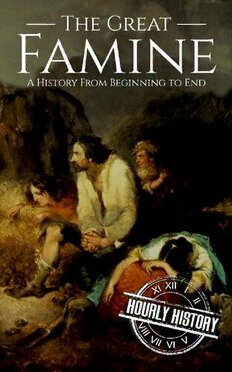
The Great Famine: A History from Beginning to End PDF
02019·0.317 MB·English
Most books are stored in the elastic cloud where traffic is expensive. For this reason, we have a limit on daily download.
Preview The Great Famine: A History from Beginning to End
Description:
The Great Famine which afflicted Ireland from 1845 to 1849 was one of the most catastrophic events in Europe during the nineteenth century. More than one-quarter of the population of Ireland died of starvation or associated disease, or were forced to emigrate. Ireland after the famine was a completely different country in many ways.The direct causes of the famine are simple to understand—a large part of the population of Ireland, mainly the poorest families, had become completely dependent on the potato as a source of food. In 1845, the blight appeared, a disease which affected the potato crop. Successive failures of the potato crop in Ireland led to more than one million people dying as a direct result.What is less easy to understand is why this famine was confined to Ireland and why the British government did not do more to help. The potato blight affected parts of Great Britain and other countries in Europe, but nowhere else did it lead to famine. For much of the famine, food continued to be exported from Ireland, and at its height, there was food stored in warehouses which could have been used to alleviate the suffering of the starving—that it was not represents at the very least a complete failure of understanding on the part of the British government.The Great Famine left a legacy of distrust and animosity between large segments of the population of Ireland and Great Britain, and this in part led to the movements which finally produced Irish independence. The famine also left a deep impression on the psyche of the people of Eire, and even today, Ireland remains at the forefront of international famine relief.This is the story of the Irish Potato Famine.
See more
The list of books you might like
Most books are stored in the elastic cloud where traffic is expensive. For this reason, we have a limit on daily download.
